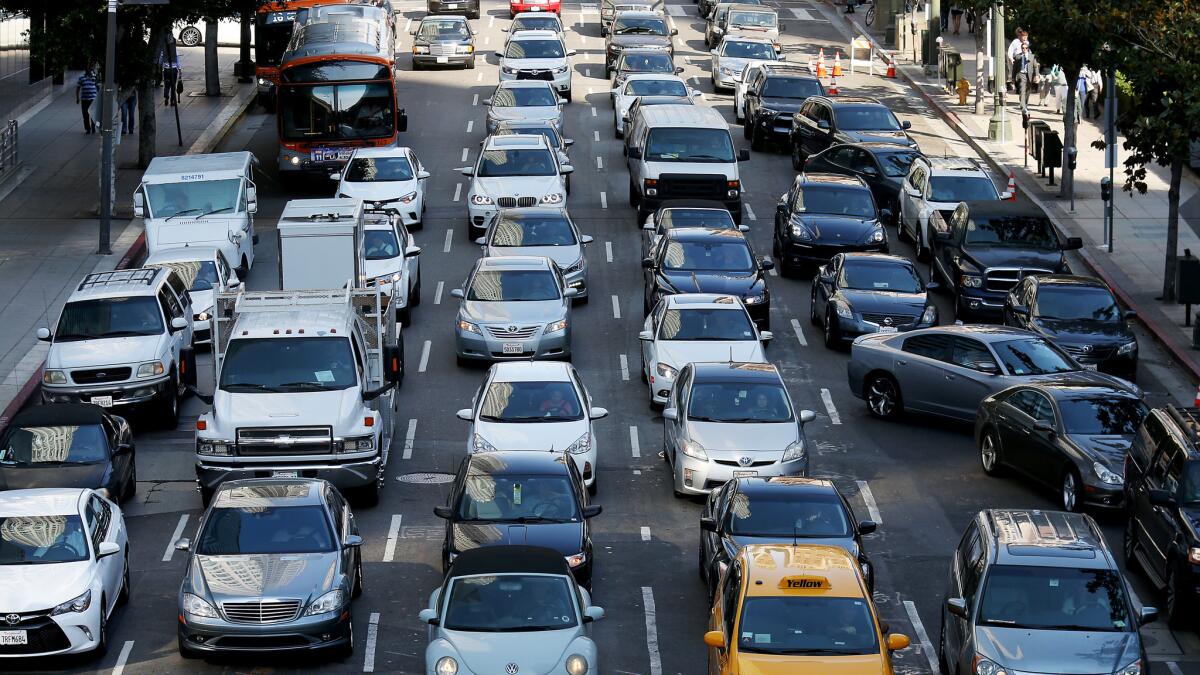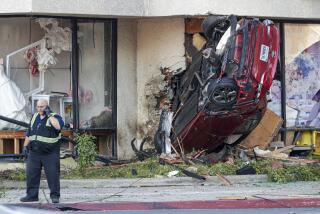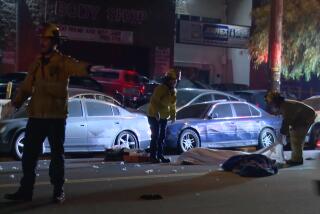Traffic deaths surged in 2015 as driving hit new record

Traffic deaths surged last year as drivers racked up more miles behind the wheel than ever before, a result of an improved economy and lower gas prices, according to preliminary government data released Friday.
Fatalities rose 7.7% to 35,200 in 2015, the National Highway Traffic Safety Administration said. That overall rate was significantly outpaced by non-motorist traffic deaths: Bicycle fatalities were up 13%; pedestrian deaths rose 10% and motorcyclist deaths rose by 9%.
Last year was the deadliest driving year since 2008, when 37,423 people were killed. It was also the year in which American drove 3.1 trillion miles, more than ever before.
The fatality rate for 2015 increased to 1.12 deaths per 100 million vehicle miles traveled (VMT), up from 1.08 deaths in 2014.
The information comes as tens of millions of Americans were hitting the road for the Fourth of July holiday, one of the busiest and deadliest days of the year on the nation’s roadways.
Historical data show that, after peaking in the 1970s, traffic deaths have fluctuated quite a bit while generally trending downward, according to the Insurance Institute for Highway Safety. Large dips in deaths have corresponded to shocks to the economy: the oil embargo of the mid-1970s, the recessions of the early 1980s and early 1990s and the more recent downturn that began with the subprime mortgage crisis.
“It’s not just that Americans drive more miles when the economy improves; it’s the kind of miles they drive,” said Russ Rader, a spokesman for the insurance institute. “What comes back after a recession is the optional driving that’s riskier, like going out on the weekends or taking long trips — different driving than the daily commute.”
The national average price of gas in 2015 was $2.40 per gallon, which was the second-cheapest annual average of the past decade, according to AAA. It was about 94 cents per gallon less than the annual average in 2014, which also saw the lowest number of traffic deaths — 32,675 — since Harry Truman was president.
See the most-read stories this hour »
“The upticks [in deaths] we’re seeing correlate to lower fuel prices, but we don’t want to give ourselves that excuse so we are digging into different areas where we can have an impact on this,” Transportation Secretary Anthony Foxx told journalists earlier this week.
The department, which includes NHTSA, is looking at how advances in automotive technology can reduce the death toll, he said. NHTSA’s revamping last year of its safety rating system for new cars to include automated emergency braking technologies may help, he said.
Motorcycle deaths have risen in part because of weak state laws on wearing helmets, said Jonathan Adkins, executive director of the Governors Highway Safety Assn., which represents state highway safety offices. A majority of states no longer require riders to wear helmets, he said.
“Motorcyclists are a bigger and bigger percentage of deaths each year,” Adkins said.
Just because the state of the economy is a significant factor in the rise and fall of traffic deaths, “it doesn’t mean that policymakers are powerless,” Rader said. If people followed a few simple measures like driving more slowly, buckling up and wearing a helmet when riding a motorcycle, he said, “the increases we’re seeing now wouldn’t be as large.”
ALSO
In wake of fatal Tesla crash, BMW taps the brakes on move to self-driving vehicles
Self-driving cars could flip the auto insurance industry on its head
Toyota recalls more than 3 million cars over air bags and emissions controls






